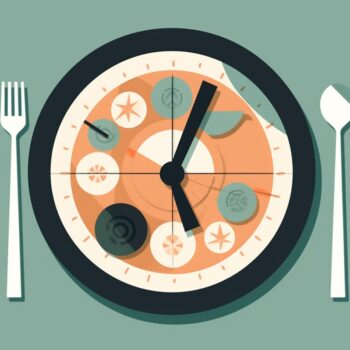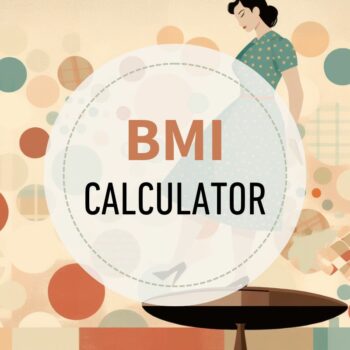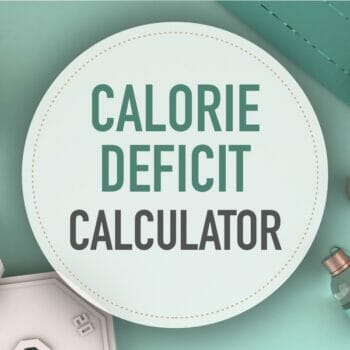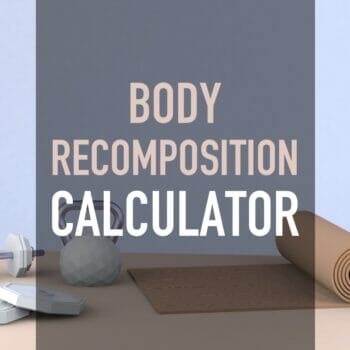Macro Calculator
This free, easy-to-use macro calculator gives you your optimal macronutrients and calories. It’s a weight loss or muscle gain calculator for both women and men.
Combine with macro counting or flexible dieting to reach your goals faster.
How to get leaner and stronger?
Our comprehensive macro-based fat loss program shows you how. Learn more
How do macros work?
The foods we eat are made up of three macros (macronutrients). These are carbohydrates (carbs), protein, and fat.
Chicken is high in protein but has no carbs; rice is high in carbs but has very little fat or protein. The three macronutrients provide the body with energy and raw materials for growth and repair.
By calculating the appropriate daily calorie amount for you, we can then break this down into the best macronutrient ratios to achieve weight loss.
Basic steps for macro counting
- Enter details into the calculator
Make sure to choose the correct goal. - Take note of your calories and macros
These will be the targets you are aiming for each day. - Track your macros
Use an app or pre-plan your meals. - Measure results
Don’t use basic weight scales.
Use proper body composition scales (we recommend Renpho) to measure fat and muscle mass changes.
What is a good macro ratio for fat loss or muscle gain?
Your macros should be based on your Total Daily Energy Expenditure (TDEE) and goals.
The calculator defaults to the best macro ratio proven to work for most people.
This ratio is:
- 30% fat
- Protein is 0.65 grams per pound of body weight,
- The remainder is carbs.
Depending on your goal, this will be either a calorie deficit or a surplus.
You can go further and make more adjustments: Perhaps you’re an extreme endomorph and do better with fewer carbs. Or perhaps you have one kidney and need to eat less protein.
You can fine-tune your results with a bit of math. See how to change your macros here.
What is a good protein ratio?
Rather than a percentage, proteins are based on your body weight. Our calculator has three settings:
- Moderate adjusts the ratio to 0.65 grams per pound of body weight.
This is appropriate for sedentary individuals or people with higher body fat percentages. - High is for active people with moderate strength training and an average body fat percentage.
- Maximum will set the ratio to 1 gram per pound.
This amount is good for bodybuilding and gaining muscle mass. You must be doing intense training.
Find out how to fine-tune your protein ratios when counting macros
Fat macro ratio
Set fat at 30% of daily energy expenditure.
Most people do very well with this amount of fat. See more about choosing the best macro fats. Because of high-fat diets like keto, many people are now eating more fat than they need to.
Carbohydrate macro ratio
Once you’ve calculated protein and fat, the remainder of your daily calories should be from carbohydrates.
Carbs fuel your body and workouts – and are the body’s preferred energy source.
If you are coming from a low-carb background, this may seem high. However, according to respected nutritional research, this is a moderate amount of carbs.
If you are eating according to your TDEE, the notion that carbs cause weight gain or stop fat loss is incorrect.
Using as a Calorie Deficit Calculator
As a weight loss calculator, this tool establishes a safe calorie deficit only.
The Lose option puts you in a 20% calorie deficit, promoting safe, steady weight loss.
The best macro ratio for body recomposition
If you want to recompose your body (lose fat and gain muscle simultaneously), then use the body recomposition calculator.
Macro ratio for maintenance
The Maintain button shows you the macro levels to maintain your current weight.
This is great if you have lost weight and don’t want to gain it back.
Macro ratio for muscle gain
The Gain button puts you in a 20% calorie surplus.
The macro breakdown is designed to build muscle fast in conjunction and must be combined with a comprehensive weight training program.
Underweight people can also use it.
TIP: Try starting with the maintenance goal and gradually increasing calories if you want lean muscle gains.
Calculating macros using your body fat percentage
The calculator uses your body weight to determine calories and macros.
However, you can obtain superior results by using your body fat percentage. The calculator allows you to choose which method: Normal for body weight, Lean Mass for fat percentage.
When to choose the Lean Mass Formula
If you are lean (have a low body fat percentage), choose the Lean Mass formula and enter your body fat %.
If you are classified as obese and have a lot of weight to lose, the lean mass formula is superior. You can read more about macro counting and obesity.
Help? Calculate your ideal body weight or get an assessment of your body fat percentage.
Why the difference? Muscle cells burn more calories than fat cells, so the more accurately we measure this, the better your results will be.
How to calculate macros per meal
You can break this down into meals once you’ve calculated your daily macros in the calculator.
Choose from 2 to 6 meals daily to see the macro ratio you can track for each meal. For some people, this is easier, but for others, this is too much detail.
Do what works for you.
Meal Plans
See a 5-day macro-based meal plan. It includes three meals and two snacks per day.
Macro calculator activity level settings
A higher activity level means a higher daily calorie goal.
For example – if you maintain your weight at 2,000 calories per day, adding vigorous daily exercise means you need more calories to maintain your weight.
If you are sedentary and trying to lose weight, adding exercise will increase your daily calorie goal.
The idea seems counter-intuitive, but more energy is required to fuel your workouts. More workouts lead to increasing metabolism; therefore, more fat is burned!
Undereating is one of the leading causes of the weight loss plateau.
So many of our clients previously “hit the wall” with dieting. They would continually reduce calories, stop losing fat, and gain weight when they eat a little more.
Macro counting defeats this by prescribing the right food and calorie levels.
Which activity level do I choose?
- Sedentary: Just regular everyday activity like a bit of walking, a couple of flights of stairs, eating, etc.
- Light: Any activity that burns 200-400 calories (females) or 250-500 calories (males) over your sedentary amount.
- Moderate: Any activity that burns 400-650 calories (females) or 500-800 calories (males) more than your sedentary amount.
- Extreme: Any activity that burns more than 650 calories (females) or more than 800 calories (males) in addition to your sedentary amount.
Other options for determining your calorie burn
- Use our calories burned calculator – it accurately assesses over 380 activities.
- Use a fitness tracker – like a Fitbit or Apple Watch (note that they can overestimate calorie burn).
- Use a suitable app – like MapMyFitness
Why should I eat more when I exercise more?
High physical activity not fueled with enough calories will lead to muscle catabolism (breakdown of muscle fiber).
This lack of nutrition could stall your weight loss, so eat up if you love to exercise!
I’ve got my macros – now what?
Once you’ve identified your target daily macros, you must determine the macros in all your foods.
By tracking them daily, you can reach your recommended macro targets that encourage fat loss, muscle gain, or whatever your goal may be.
You can learn more about the macro counting system and the flexible dieting philosophy. Many people use an app like Myfitnesspal to track macros.
For more specifics on what to eat – see a sample macro meal plan or a list of macros for familiar foods.
View article sourcesSources
- Mifflin, M. D., St Jeor, S. T., Hill, L. A., Scott, B. J., Daugherty, S. A., & Koh, Y. O. (1990). A new predictive equation for resting energy expenditure in healthy individuals. The American Journal of Clinical Nutrition, 51 (2), 241-247. Link
- McArdle, W. D., Katch, F. I., & Katch, V. L. (2010). Exercise physiology: nutrition, energy, and human performance. Lippincott Williams & Wilkins. Link
- Jequier, E. (1994). Carbohydrates as a source of energy. The American journal of clinical nutrition, 59(3), 682S-685S.
- Lemon, P. W., Tarnopolsky, M. A., MacDougall, J. D., & Atkinson, S. A. (1992). Protein requirements and muscle mass/strength changes during intensive training in novice bodybuilders. Journal of Applied Physiology, 73(2), 767-775. study abstract link
- Grundy, S. M. (1999). The optimal ratio of fat-to-carbohydrate in the diet. Annual review of nutrition, 19(1), 325-341. abstract
- Conlin, L.A., Aguilar, D.T., Rogers, G.E. et al. Flexible vs. rigid dieting in resistance-trained individuals seeking to optimize their physiques: A randomized controlled trial. J Int Soc Sports Nutr 18, 52 (2021). https://doi.org/10.1186/s12970-021-00452-2
2,104 Comments


 Menopause Macro Calculator
Menopause Macro Calculator Intermittent Fasting Calculator
Intermittent Fasting Calculator BMI Calculator
BMI Calculator Calorie Deficit Calculator
Calorie Deficit Calculator Body Recomposition Calculator
Body Recomposition Calculator
Okay I’ll try eating foods with less fat. Thank you for your help!
Hello Ted. I’ve been doing this for about 3 weeks and the results are great. I haven’t gone over my macros yet until TODAY 🙁 I told myself it was ok for this one time but wanted to be sure of this thought. Could this splurge day eating over my macros also help keep me from plateaus. I guess im asking what’s the positive side of it if any cause you only hear the negative? And will it affect my progress any if I go over this 1 day?
Hey Flexible Dieters! I’ll be away exploring Alaska, hiking some great trails and eating some great salmon! I’ll be leaving technology behind so if you ask a question between May 31- June 6 It will take awhile for me to respond. For any technical issues about the calculator feel free to ask, or if you just want to leave a comment and tell us how great it is, that’s fine too. 🙂 but diet questions will go unanswered for a bit.
I really seem to understand the main point of iifym after doing research, and I have decided to give it a try. I do however have one question. I understand that this flexible diet revolves around hitting your macro amounts, but I am confused about the extra calories left over. If I have left over calories and I eat them, won’t I be adding more to my macros? Some websites say going over your macros is bad and that you should only be 5 grams below or above your macros amounts. I don’t understand what you do with the extra calories or what you can eat after you hit your macros if this is true. Please help me, I cannot seem to find a website that will answer this for me.
Hi Jessica, Glad you are giving it a try. So this is a common problem and it has to do with errors on nutritional labels/information. You should go with your macros as if they are satisfied you should also be at your TDEE calorie level. Calories only come from carbs, protein, and fat. I saw a label the other day that listed 0 for all three but said it had 10 calories? go figure…. I think this is pretty common for some reason, so go with your macros and ignore the extra calories. I assume you are using MyFitnessPal or similar?
Thank you so much for the response, I really appreciate it! Yes I set up MyFitnessPal with the information on this website to track my macros correctly; however, it is difficult when some nutrition label information is incorrect.. I’m also finding it difficult to achieve my macros while staying under my calorie limit. Does this just mean I should be eating leaner or more nutrient dense foods? I am not eating junk food by any means, I am eating sandwiches, eggs, almonds, yogurt, bagels, peanut butter, etc.
Is the macro calculator set on a per meal basis?
It can be. There is a setting to toggle between “all, 3, 4, 5 meals per day” ” by default it displays your daily total.
Hello. I am female 70inches 250lbs currently starting off on this program. I inputted into the calculator that I was doing light exercise as I am in a gym class 2x a week plus some softball on the weekends. IS that correct? Or should I still be inputting it as sedentary to loose weight?
Another question…when aiming to meet your macros on My Fitness Pal..is the goal to meet calories along with the fat/protein/carb each day?
Hi Ronni, Thanks for using our calculator. so it looks like you are exercising just 3 days week. You could probably get away with using your sedentary levels since you have a fair bit of weight to lose. If your exercise changes then revisit. As for MFP be sure to read my guide here.
https://healthyeater.com/iifym-myfitnesspal-tutorial
But you should strive to meet your macros and calorie amounts as meeting your macros will equal your calorie amounts. However, with MFP this isn’t always the case since there are errors on food nutritional labels. I saw a product the other day that listed 0 grams of fat, carbs, and protein but said it was 10 calories? go figure… those calories had to come from somewhere….. All the best and keep us posted on your progress.
Thanks so much for the quick answer. I had read some more after I posted and realized that meeting my macros would meet my calorie intake.
I will bump it down to sedentary….and keep you posted!
BTW! Thank you for making a website that makes sense on IIFYM!
you’re welcome, so glad we could help!
Hello! I have a question as total sedentary can you still lose weight by tracking macros? I am in a recovery process from an accident and I will be in a few days in my #3 ankle surgery, I even have a broken arm. As you can see exercise will be a hard stuff at least for the next 3 months. But despite of that I expect to lose weight because that way I will help my recovery and at the same time improve my health and life… I am a 30 years man measuring 180cms and weighing 244 pounds.
Hi Enmanuel, Yes, you sure can. You just have to eat at the correct TDEE and macros, which in your case will be sedentary. Good luck and let us know how it goes for you.
So I have been tracking food on MFP since beginning of this year and I have a fitness band to track movement. I was pretty sedentary up until that point except for a couple beginner yoga classes per week. I start walking 5 miles a day and switched to power yoga twice a week. MFP said to eat 1400 calories a day to lose 1.5 lbs a week. After 3 weeks and no results I kept lowering my calories. Five weeks ago I bought an elliptical machine and I’m doing 60 minutes 6 times a week and walking 6 miles the other day plus making sure I get at least 10,000 steps in daily. It’s been a struggle and after 5 months I’m down 19 lbs. I guess I should tell you I’m 54 female 5″5′ and now weigh 156. After two weeks of adding the elliptic machine workouts and no results I started tracking macros and increased calories. I’ve been doing this now for 3 weeks and keep playing with the same 2.5 lbs. down one week up the next. Just don’t understand what I’m doing wrong. I keep track of my activies separate just so I know what I’m burning but eat same macros every day. Just don’t understand why I’m not losing. Measure haven’t changed in a month either. Help!
Hi Kellie, I would guess that you aren’t eating enough to support all of your exercise + run your body and now your body has switched to conservation mode. You really should be classified as highly active and eating 1808 calories a day for weight loss. your maintenance TDEE is 2260.
I think all of those months of eating 1400 calories did some damage to your metabolism and will take time to undo. I wrote an article on this subject here. https://healthyeater.com/eat-to-lose-weight
Thanks Ted! I did increase to 1600 three weeks ago after cutting to 1200. Is so scary to eat all those calories but I will try increasing a little each week. Hard to change all these years of thinking low calories. I really struggle getting all my protein in even tho I eat protein with each meal and drink one to two protein shakes. Is 30% to much protein?
Based on your exercise level, I would say 30% is needed. Choose supplements with at least 24 g per scoop, which makes things a little easier. Keep us posted on how it goes.
So I reset my MFP settings to the ones shown, but I’m still a little confused about the activity level. I’m in the “very active” range (burning ~1000 Cal per workout) and trying to lose about 1.5 lbs a week. Should I still use “sedentary”in both MFP and your calculator? The macros seem quite low in comparison to what I had been eating. I’m still tracking burnt calories, so I know my total intake will be much higher at the end of the day.
It’s up to you really. If you use the activity adjusted macros then you simply eat the same macros everyday. If you enter sedentary and then track your exercise, your macros will change based on how much exercise you do. The second is probably better if your exercise varies a bit.
Thank you, but I meant still tracking exercise with a setting higher than “sedentary”
You shouldn’t track exercise and eat those calories back with any setting other than sedentary. Other settings have already adjusted your calories based on estimated exercise.
I was just introduced to this plan and am quite curious. There is no sugar, fat, or protein in a Diet Coke. If I were to drink a 2 Liter everyday, is that ok for this plan?
Hi Jacob, It is ok, but since this site is called “healthyeater” I would have to note that it’s not the best choice you could make. According to Caffeine Informer there is 253 mg ( http://www.caffeineinformer.com/caffeine-content/diet-coke ) of caffeine in a two liter not to menton all the chemicals, but it is acceptable on the flexible diet.
If I am going to track my exercise on MFP do I enter Stationary on your calculator to get my macros then plug my cals burned in to MFP to see daily in tack?
Hi Cheryl, Have you read my MFP tutorial? It’s all explained there 🙂 https://healthyeater.com/iifym-myfitnesspal-tutorial
Thanks Ted I understand know. I do have one more question, when I add my cals burned from exercise I have to then consume that many more cals? (So normal cals are 1400 added in 250 exercise and then eat 1650 for the day) If I eat the cals I just burned it seem counterproductive.
1400 should have already given you a 20% calorie deficit, if you selected “lose” on our calculator, which is a good target. If you don’t eat back your exercise it can put you in an unhealthy deficit that can mess with your metabolism.
Hi Ted,
I’m struggling with seeing weight loss results, My stats are im 24, 206 lbs, and 5’8. I have been back at the gym for 3 weeks now (was out for six weeks due to recovering from having my son) but I also worked out my entire pregnancy and was working out before pregnancy, just to give you a background. I was 193 pre-pregnancy, 230 at delivery and now 8 weeks out im 206. I just stated following the macro system and it has me at 2623 cal, 322C, 170P and 73F which is calculated for days I workout, I workout monday-friday and sundays doing 30-50 mins of cardio each session (usually interval training on elliptical, treadmill or stair master) and an hour or so of heavy weights. Each session my polar watch has me at a burn of anywhere from 800-1000+. On Saturday I rest and the calculator said I should be at 1825 cal, 172C, 170P, 51F. Before using the macro system, I was eating around 1500 calories and still having those 800-1000 calorie burns at the gym and realized my calorie deficit was way to low, which is what led me to the macro system and upping my calories dramatically. I have started to gain weight since upping my calories and using the macro system, about 2lbs. I’m trying not to obsess about this, but I also dont want to ignore and then the weight gain is at +10 or more. So my questions are, is the reason I am now gaining weight because my calories have been increased by 1000 to support my calories burned? Also, if this is the reason why I am seeing weight gain, how long should I anticipate this to happen before I start loosing weight? Thanks, Lea
Hi Lea, It sounds like you need to give it some more time. If you slowed down your metabolism by eating too little it will take some time to get things going again. Sometimes it’s better to gradually increase your calories after eating too little so as not to “shock” your system” . Another thing to consider is your heavy weight training is building some muscle and worked out muscles retain water, so some of the weight gain could be attributed to that. Also with this method weight loss isn’t fast but when it gets going it will be slow and steady.